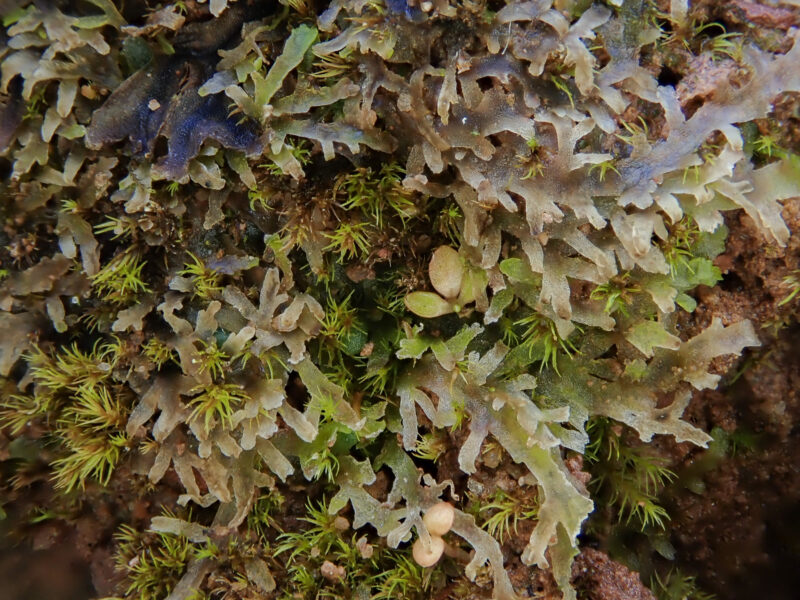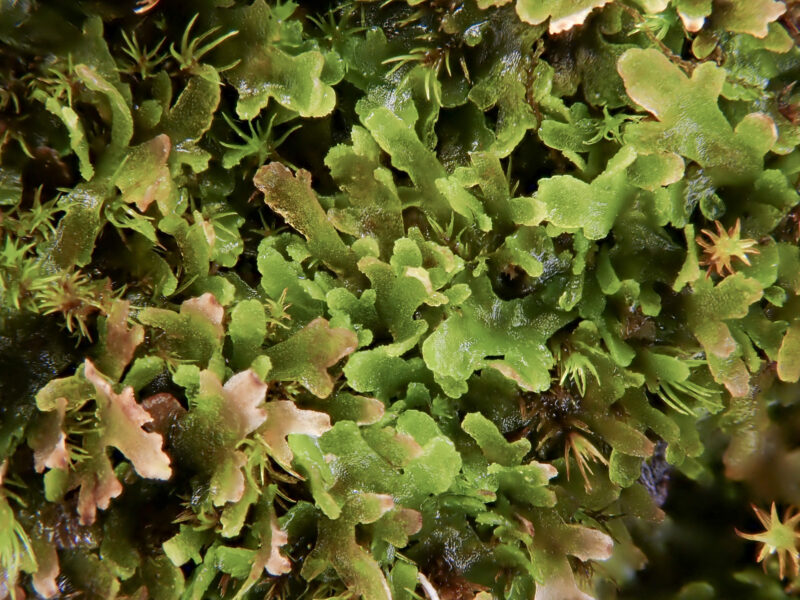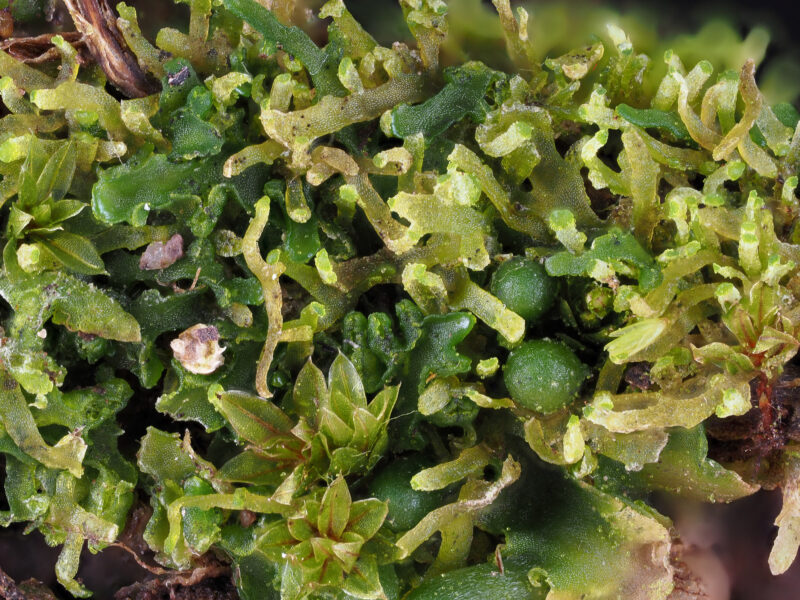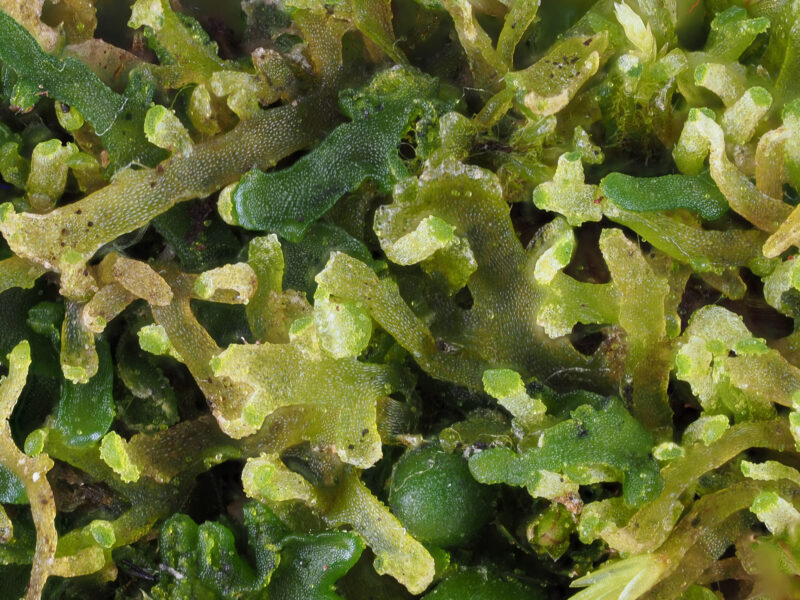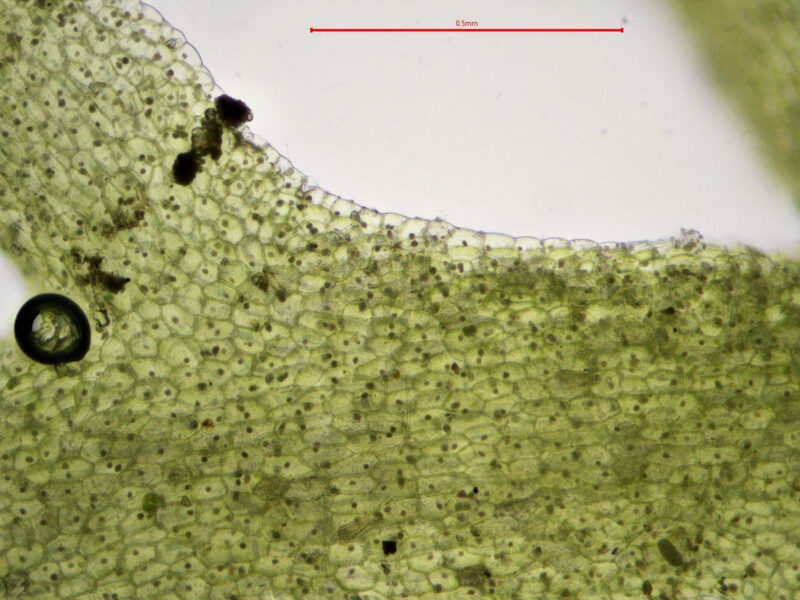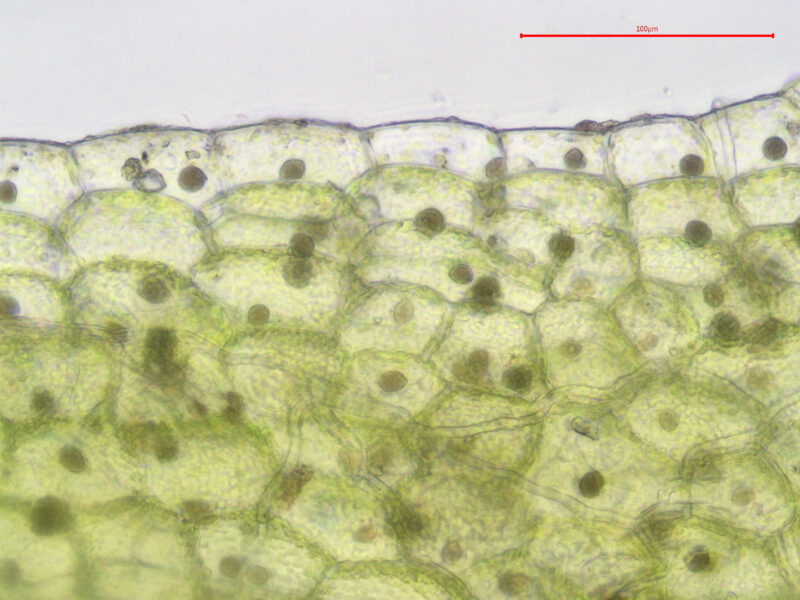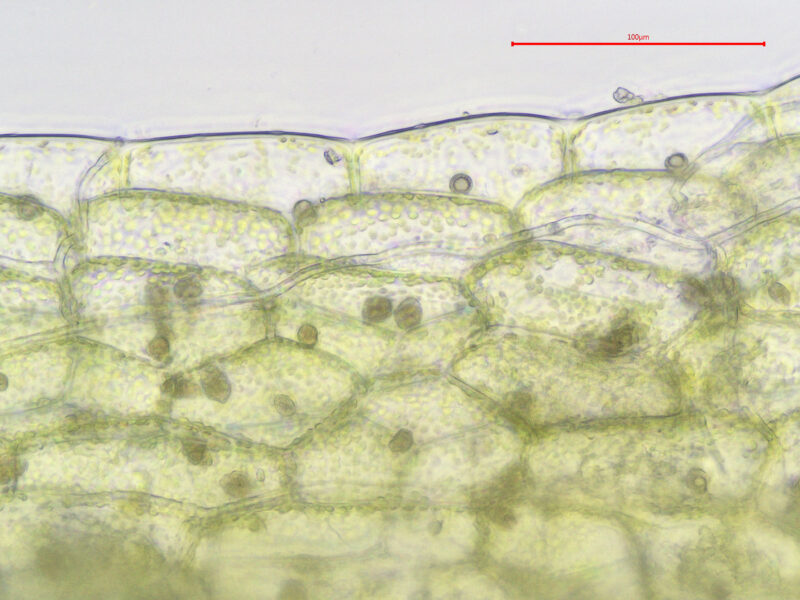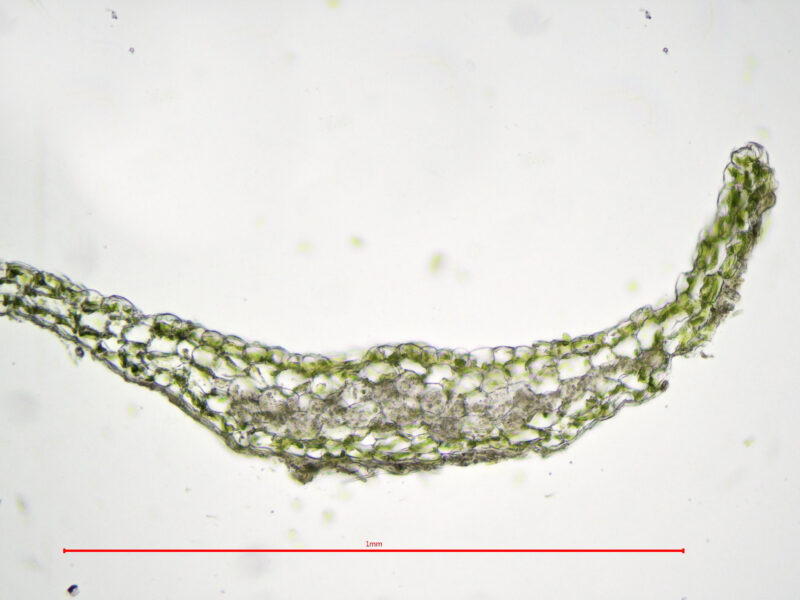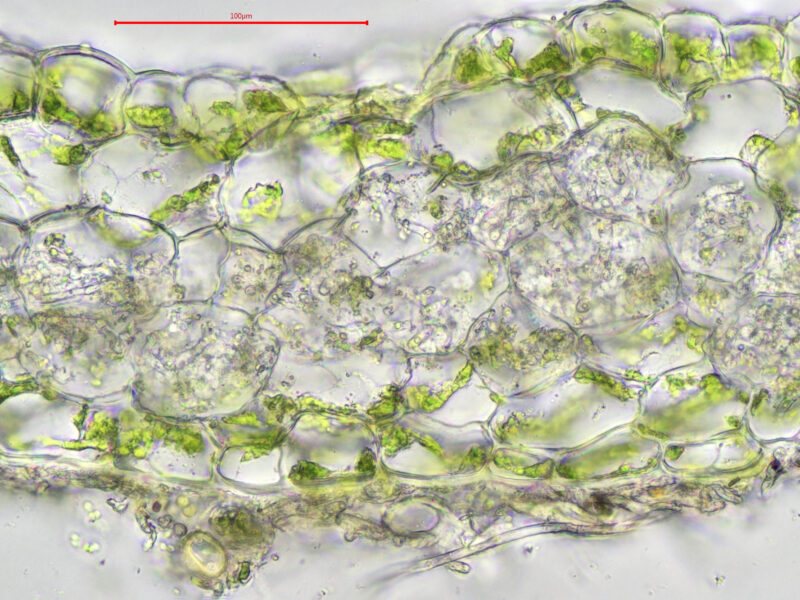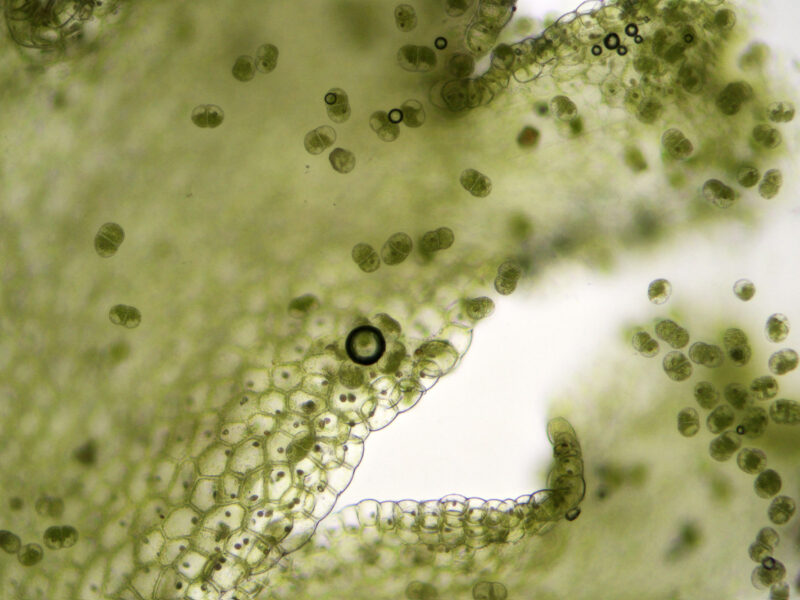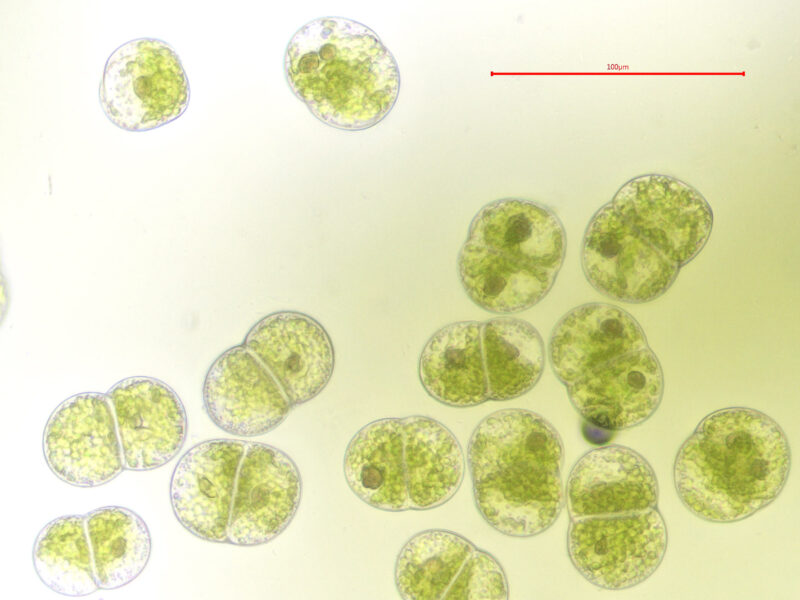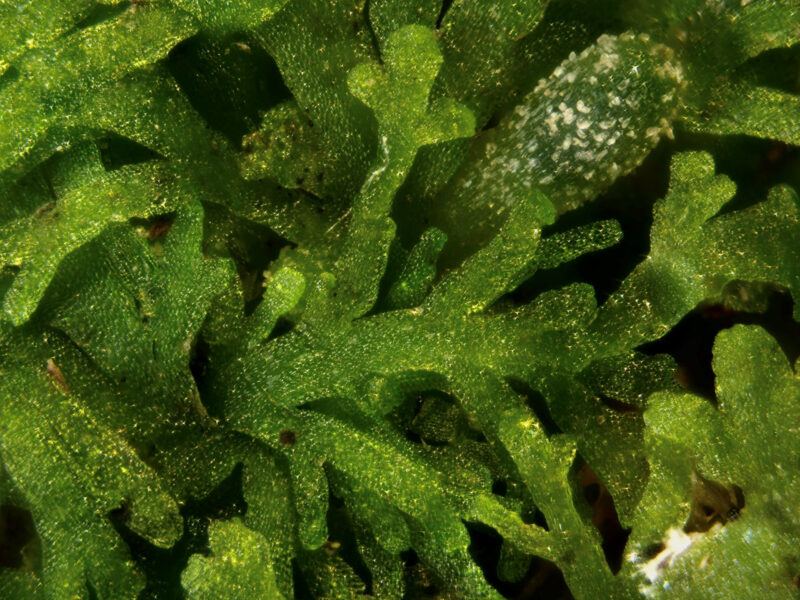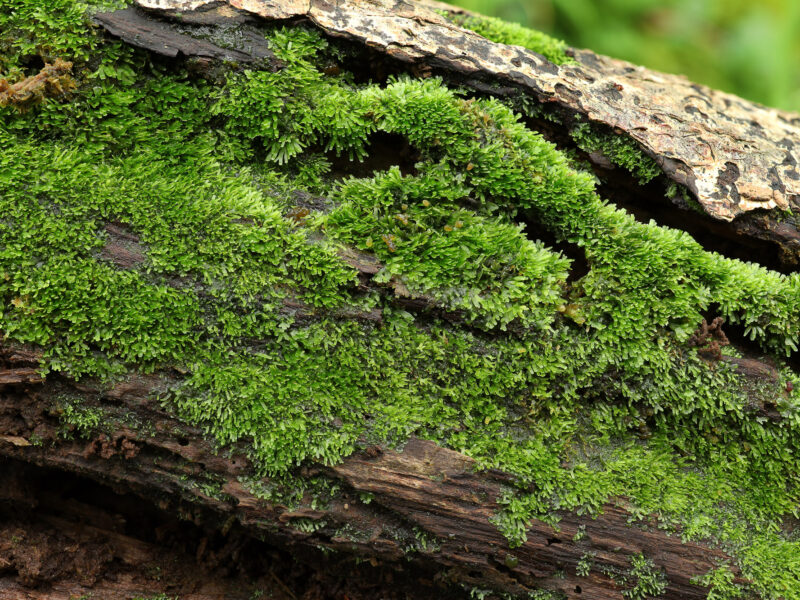Identification notes
Of our five species of Riccardia, this one has the most varied habitats and, unhelpfully, it can be very variable in growth form and appearance. It is the species that is most likely to be found in strongly basic and quite dry situations, such as north-facing chalk and limestone banks and holloways.
Typically pinnately branched forms can often be identified in the hand. With a hand-lens, look at the upper surface of the plant. How conspicuous is the pale edge of the thallus branch? The thallus of Riccardia species is multistratose, except at the very edge, where it is only one cell thick. In R. chamedryfolia this unistratose edge is very narrow and therefore inconspicuous, unlike R. multifida, where it is 2-3 rows wide and obvious as a pale band.
Beware anomalous forms of R. chamedryfolia that grow on decaying wood, and have many erect branches, much like R. palmata. Microscopic examination of e.g. the shape of the thallus in cross-section, and the dimensions of epidermal cells and gemmae can then be the only way of confirming the species.
Read the Field Guide account
